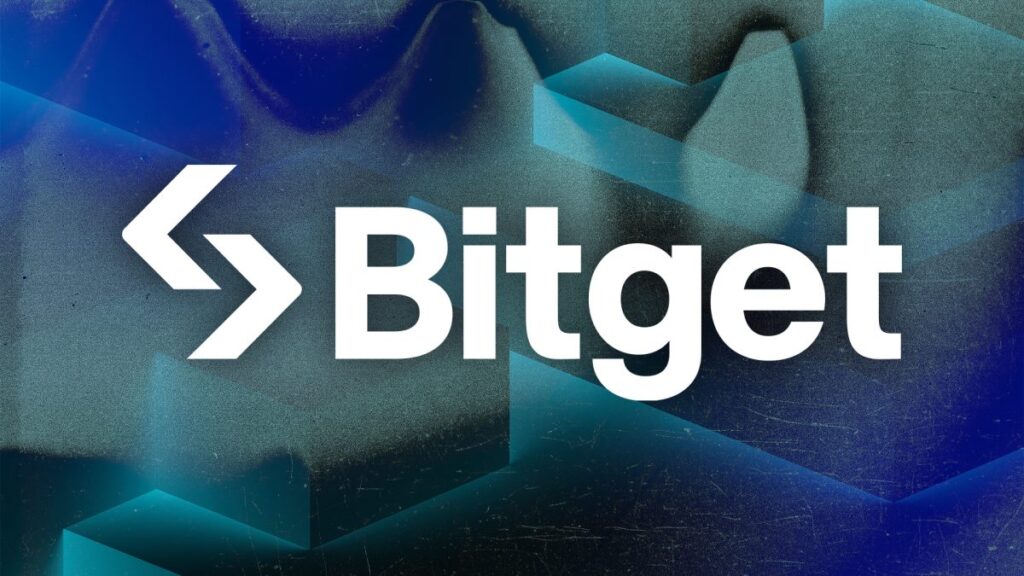AI startup Anthropic has decided not to accept investments from Saudi Arabia for the sale of an 8% stake in the company, originally purchased by Sam Bankman-Fried three years ago for $500 million.
This decision is made amidst the bankruptcy proceedings of FTX, and the stake, spurred by the booming interest in AI technologies, is now valued at over $1 billion.
The rejection of Saudi investments is attributed to national security concerns, particularly regarding the potential dual-use of technology for civilian and military applications, which could complicate matters with regulatory bodies like the Committee on Foreign Investment in the United States (CFIUS).
The sale, expected to finalize in the coming weeks, aims to use the proceeds to repay FTX customers.
The shares, classified as class B and lacking voting rights, are valued based on Anthropic’s latest $18.4 billion valuation.
Despite the company’s significant funding rounds totaling about $7 billion from tech behemoths such as Amazon, Alphabet, and Salesforce, the current transaction excludes these entities from the pool of potential buyers.
Instead, the sale is targeted towards a new investor syndicate through special purpose vehicles (SPVs), with venture firms being approached to participate.
Anthropic, known for its advanced language model competing with OpenAI’s ChatGPT, is led by founders Dario and Daniela Amodei.
READ MORE: SEC Delays Decision on Ether ETFs, Casting Doubt on Approval Odds Amidst Growing Skepticism
Although they have the right to vet investors, they are not directly involved in the ongoing sale discussions.
Their acquaintance with Bankman-Fried was facilitated by a mutual interest in “effective altruism,” aimed at leveraging wealth for charitable causes.
While rejecting Saudi Arabian funds, Anthropic is open to investments from other sovereign wealth entities, including the UAE’s Mubadala, which is reportedly considering an investment.
The marketing of FTX’s stake is managed by Perella Weinberg.
Saudi Arabia’s sovereign wealth fund, the PIF, with assets over $900 billion, continues its aggressive technology sector investments, including talks with Andreessen Horowitz for creating a $40 billion AI-focused fund.
These moves align with Crown Prince Mohammed bin Salman’s “Vision 2030 Initiative” to diversify the nation’s economy beyond oil, including investments in global tech companies, sports leagues, and enhancing international financial relationships.
This backdrop adds complexity to Anthropic’s decision, especially as Saudi Arabia seeks to strengthen its tech capabilities amid growing ties with China.
To submit a crypto press release (PR), send an email to sales@cryptointelligence.co.uk.
Taki Games, a pioneering social gaming network offering real-money rewards, has made a significant announcement regarding its native $TAKI token. It is now officially listed on Cube Exchange, marking a key development since its last centralized exchange listing back in April 2022 on OKX and Gate.
Taki Games, known as the leading mobile blockchain-based gaming network, has successfully fused captivating gameplay with innovative tokenomics to enhance the overall gaming experience. Gamers now have the opportunity to own in-game assets, earn crypto-based rewards, and engage in digital asset trading via a peer-to-peer marketplace.
At the core of this project is the ambition to rectify the shortcomings of first-generation play-to-earn games, characterized by flawed tokenomics and misaligned incentives. Taki introduces a novel approach known as “Takinomics,” aimed at ensuring the stability of in-game economies, thus delivering greater value to all stakeholders.
In stark contrast to other play-to-earn games that rely on speculative interest, Taki’s Takinomics model incorporates a buy-and-burn mechanism that acquires tokens from the open market. This strategic move incentivizes players to generate revenue for the games while channeling this value back into the in-game economy through a rewards system anchored by the $TAKI token.
Taki’s ultimate goal is to become the Zynga of blockchain gaming, enticing mainstream gamers into the world of Web3, where they not only enjoy their favorite games but also become co-owners while reaping tangible rewards for their gaming efforts. Built on Solana, a prominent blockchain for Web3 gaming, and supported on Polygon, another significant decentralized gaming network, Taki has also partnered with Flowdesk to bring institutional-grade liquidity to its network.
The listing on Cube Exchange represents a pivotal milestone. Cube Exchange distinguishes itself as an innovative cryptocurrency exchange with a focus on Solana tokens. Its unique user-centric approach to asset control combines the convenience and user experience of centralized exchanges with multi-party computation custody, off-chain matching, and on-chain settlement. This collaboration aligns perfectly with Taki’s mission to address tokenomics challenges within Web3 gaming and Cube Exchange’s determination to enhance safety in crypto capital markets.
Weiwei Geng, CEO of Taki Games, expressed excitement about Cube Exchange’s support for $TAKI and emphasized the importance of deepening $TAKI’s liquidity. He commended Cube’s efforts in making crypto markets safer and more transparent, particularly within the thriving Solana ecosystem.
“We’re excited to see Cube Exchange support $TAKI, which powers cross-chain rewards for Taki Games’ network of mobile games,” Geng said.
“We’re building the Zynga of Web3 gaming, and driving value back to players through constant buybacks, so it’s crucial to continue to deepen $TAKI’s liquidity, especially with platforms like Cube. The work Cube is doing to make crypto markets safer and more transparent, especially for retail traders, is commendable, and all the more important given the incredible excitement in the Solana ecosystem right now.”
Taki Games has witnessed remarkable growth in the past year, ranking among the top 100 Web3 gaming ecosystems across all blockchains, as per Dappradar data. In the last month alone, $TAKI’s trading volume surged from an average of $300,000 – $400,000 per day to over $13 million, while the Taki mobile app garnered over 5 million installs on Android devices.
This remarkable growth is particularly promising considering the vast potential of blockchain gaming, with Web3’s gaming ecosystem still relatively small compared to the traditional games industry, boasting approximately one million daily active players.
Bartosz Lipiński, CEO of Cube Group, affirmed the exchange’s commitment to enhancing safety and trust in the crypto industry. He also expressed enthusiasm for projects like Taki Games, which utilize $TAKI to address economic challenges within the Web3 gaming landscape. This commitment, he believes, will not only benefit Cube Exchange users but also contribute to the overall integrity of crypto markets and Web3.
Since its launch in 2018, Bitget has emerged as one of the world’s leading cryptocurrency exchanges, with the platform specially showcasing an immense amount of growth this past year. This article delves into the key factors contributing to its 2023 success, focusing on the impressive performance of its native token (BGB), the robustness of its user protection fund, and its use of various transparency-rooted practices.
A Closer Look at BGB’s Monumental Rise
The Bitget Token (BGB), which drives the exchange’s internal operations and is used by traders for staking, social trading, profit sharing or receiving discounts on trading fees, played a pivotal role in forging the platform’s impressive 2023 growth narrative. Registering an astounding 291% profit and peaking at an all-time high value of $0.66 on Dec 22, BGB emerged as a symbol of user confidence and market validation of Bitget’s wide array of services.
Several factors contributed to this success, including the introduction of new features such as staking for zero withdrawal fees and eligibility for new coin airdrops for holders. In fact, by the end of the year, the number of BGB holders surged by 83%, with its trading volume witnessing a 110% increase, reaching an impressive total of $5.15 billion.
Fostering Market Stability, One Step at a Time
In addition to BGB’s success, Bitget’s ‘Protection Fund’ which serves as a critical component of its security infrastructure, also achieved a remarkable high of $424 million (during Q4 2023). By encompassing a diversified portfolio, including cryptocurrencies like Bitcoin (BTC), Tether USD (USDT), and USD Coin (USDC), the fund continues to ensure a high degree of financial stability and adaptability during periods of market volatility.
On a technical note, it bears mentioning that the protection fund operates with a high degree of autonomy, allowing for prompt/efficient asset coverage when needed — thereby circumventing external dependencies as well as any bureaucratic delays. Such a high degree of agility is crucial when it comes to addressing and mitigating risks arising from hacks and extreme market conditions.
An Expanding User Base and Surging Operational Growth
Bitget’s client base witnessed a remarkable expansion during 2023, growing from 8 million to an impressive 20 million users. To accommodate this surge, Bitget increased its staff count from 1100 to 1500 employees. Additionally, the platform experienced a significant boost in its engagement levels, with its website recording 10.4 million average monthly visits (peaking at 13.6 million during May).
Furthermore, Bitget’s proactive approach to expanding its offerings was evidenced by its spot trading numbers. Over the course of the year, the platform added 355 new listings, resulting in an extensive selection of over 600 tokens and 700 spot trading pairs.
Surplus Reserves and Other Positive Financial Data
Bitget’s commitment to transparency and financial stability came to the forefront in 2023 after the exchange released a comprehensive Proof of Reserves (PoR) report, revealing a robust reserve ratio of 175%. The ratio — which stands significantly above the standard 100% mark — indicates excess reserves in comparison to its liabilities, ensuring that user funds are fully backed and readily accessible at all times.
Delving deeper into the PoR data, Bitget’s reserve status included holdings of substantial digital assets like BTC, ETH, USDT, and USDC, collectively exceeding $1.7 billion. This financial prudence was paralleled by Bitget’s trading volume, which reached an astounding $3.14 trillion last year. The platform also witnessed a significant surge in spot trading volume, which climbed to $81.6 billion, marking a remarkable 94% increase from the previous year.
Investments and Strategic Initiatives
Bitget’s strategic foresight was further highlighted by its significant investments and initiatives. A notable move was the $30 million investment in BitKeep — a crypto custody platform that has since been rebranded as Bitget Wallet — marking a decisive step in integrating decentralized and centralized finance solutions.
Additionally, Bitget demonstrated its commitment to supporting innovation and growth within the crypto sector by establishing two major funds, namely the EmpowerX Fund and the Web3 Fund, each capped at an impressive $100 million. The funds seek to nurture promising projects and partnerships within the digital asset arena.
Lastly, aligning with the ever-evolving needs of the crypto market, Bitget underwent a strategic rebranding in 2023. The platform’s new motto, ‘Trade smarter,’ reflects the firm’s focus on empowering users with more intuitive and intelligent trading tools. The change was not just meant to be a cosmetic one but a reaffirmation of Bitget’s over-arching mission to provide a sophisticated and user-friendly trading experience, especially for those new to the crypto world.
In recent years, artificial intelligence (AI) has made significant strides in the world of image generation, including AI nudes.
From breathtaking landscapes to lifelike portraits and abstract art, AI-generated images are becoming increasingly sophisticated and widely used across various industries.
The Evolution of AI-Generated Images
The journey of AI-generated images dates back to the mid-20th century when early computer scientists and artists began experimenting with digital art. However, the true revolution came in the 21st century with the advent of deep learning and generative adversarial networks (GANs). GANs, introduced by Ian Goodfellow in 2014, have played a pivotal role in advancing the field.
GANs consist of two neural networks: a generator and a discriminator. The generator creates images, while the discriminator evaluates them. They engage in a continuous back-and-forth process, with the generator improving its ability to create realistic images and the discriminator refining its judgment. Over time, this dynamic competition results in AI-generated images that are increasingly convincing and indistinguishable from those created by humans.
Applications of AI-Generated Images
- Art and Creativity: AI has opened up new avenues for artists and designers to experiment with their creativity. Artists can collaborate with AI models to generate unique pieces of digital art, combining their vision with the capabilities of AI to produce stunning and innovative works.
- Entertainment and Media: The film and gaming industries have embraced AI-generated images to create realistic special effects, breathtaking landscapes, and even entire characters. This technology has the potential to reduce production costs and enhance the visual quality of entertainment content.
- Product Design: In product design, AI can generate 3D models and prototypes, enabling designers to explore various concepts quickly. This can accelerate the product development process and lead to more efficient and cost-effective design iterations.
- Medical Imaging: AI-generated images have proven invaluable in the field of medical imaging. AI algorithms can enhance and analyze medical scans, helping doctors diagnose diseases more accurately and aiding in treatment planning.
- Architecture and Urban Planning: Architects and urban planners use AI-generated images to create realistic architectural visualizations and urban landscapes. This helps clients and stakeholders visualize the final designs, making the decision-making process smoother.
- Fashion and Design: AI can generate fashion designs and patterns, offering inspiration to fashion designers. It can also be used to create digital clothing for virtual try-ons in e-commerce, revolutionizing the online shopping experience.
- Advertising and Marketing: Marketers leverage AI-generated images to personalize advertisements and marketing materials. By tailoring visuals to individual preferences, companies can increase engagement and conversion rates.
Ethical Considerations
While AI-generated images hold great promise, they also raise ethical concerns that must be addressed:
- Misuse and Manipulation: AI-generated images can be used to create deepfakes, where individuals’ faces are superimposed onto other bodies (such as AI nudes) or used for malicious purposes. This raises concerns about misinformation and privacy violations.
- Intellectual Property: The question of ownership and copyright regarding AI-generated art remains unresolved. Who owns the rights to a piece of art created in collaboration with AI? Legal frameworks must adapt to address these issues.
- Bias and Discrimination: AI models trained on biased data can perpetuate societal biases and stereotypes. Ensuring diversity and fairness in AI-generated images is essential to avoid reinforcing harmful stereotypes.
- Dehumanization: As AI-generated images become more realistic, there is a risk of dehumanizing real individuals. People may be skeptical of photographs and videos, further eroding trust in media.
- Job Displacement: In creative industries like graphic design and illustration, there are concerns about job displacement as AI becomes more proficient at generating images. Balancing the benefits of automation with the need for employment opportunities is a challenge.
Future Prospects
The future of AI-generated images is bright, with several exciting developments on the horizon:
- Increased Realism: AI models will continue to improve in creating images that are virtually indistinguishable from those captured by cameras. This will have profound implications for various industries, including entertainment and virtual reality.
- Customization: AI will enable highly personalized content generation, allowing individuals to have art, fashion, and other designs tailored precisely to their preferences.
- Collaboration: Artists and designers will increasingly collaborate with AI models, pushing the boundaries of creativity and innovation. The synergy between human creativity and AI capabilities will lead to remarkable creations.
- Ethical AI: Researchers and policymakers will work to develop ethical guidelines and regulations for AI-generated images to address concerns related to privacy, bias, and misuse.
- AI-Enhanced Education: AI-generated educational materials, including interactive diagrams and visual aids, will enhance the learning experience, making complex topics more accessible.
Why Are AI Nudes a Problem?
AI nudes are a growing concern, as they can potentially be used to tarnish someone’s reputation or be used to extort wealthy or famous individuals. This issue is likely to persist and become even worse as AI becomes more advanced.
In Conclusion
AI-generated images are at the forefront of technological innovation, offering a world of possibilities for artists, industries, and society at large. While they raise ethical questions and challenges, the potential benefits of AI-generated images are undeniable. As technology continues to advance, it is essential that we navigate this evolving landscape with ethical considerations and responsible use in mind, ensuring that AI-generated images contribute positively to our lives and the creative industries.
Over the past two years, the value of Bitcoin (BTC) has been significantly influenced by the ongoing COVID-19 pandemic, escalating inflation rates, and regional conflicts.
However, according to Blockstream CEO Adam Back, 2024 holds the promise of a resurgence for the world’s leading cryptocurrency.
Back, the cryptographer responsible for pioneering the proof-of-work algorithm utilized in Bitcoin’s protocol, spoke to Cointelegraph about how Bitcoin is currently trailing below the historical price trend line observed during previous mining reward halving events.
These halving events are hardwired into Bitcoin’s code, occurring every 210,000 blocks, and result in a reduction of Bitcoin miners’ block rewards, from 6.25 BTC to 3.125 BTC in the upcoming halving.
Back explained that when analyzing the averages of past market cycles and halving events, it becomes evident that Bitcoin’s relative value is lagging behind widely accepted projections.
Several factors have contributed to this decline in BTC’s price, a trend also observed in traditional financial markets.
“The last few years were like biblical pestilence and plague.
There was COVID-19, quantitative easing, and wars affecting power prices. Inflation running up people, companies are going bankrupt,” Back pointed out.
These events have had a significant impact on financial markets and portfolio management. Investment managers have had to navigate risk and losses, leading to the sale of more liquid assets, including Bitcoin.
As 2023 draws to a close, many of these macro events have subsided, and industry-specific issues have been resolved.
READ MORE: Ripple Advocates for Central Bank Digital Currencies in New White Paper
This positive development has been reflected in Bitcoin’s recent price surge starting in November 2023.
Back reiterated his previous prediction that Bitcoin would reach $100,000 in the next market cycle and emphasized that it might have already reached that milestone if not for the macroeconomic factors mentioned earlier.
He also referred to the “stock-to-flow” model created by PlanB, a pseudonymous former institutional investor.
This model suggests that wise Bitcoin investors historically bought BTC six months before a halving event and sold during significant price surges in the 18 months following the reward reduction.
Given Bitcoin’s recent price hitting $44,000 multiple times in December 2023, Back’s earlier prediction seems less far-fetched.
Additionally, prominent investors and market analysts have highlighted the potential approval of several spot Bitcoin exchange-traded fund (ETF) applications by the United States Securities and Exchange Commission (SEC).
These approvals, expected in early 2024, could lead to substantial institutional investment inflows into BTC-backed products.
Back believes that Bitcoin could reach $100,000 even before the ETF approval and the halving.
He stressed that the ETF’s influence should not be underestimated, particularly as it would allow traditional market segments and major fund managers like BlackRock and Fidelity to invest in Bitcoin indirectly, which they are unable to do directly due to their fund rules and regulations.
In conclusion, Adam Back’s outlook for Bitcoin in 2024 is optimistic, with the potential for significant price gains driven by various factors, including the upcoming halving and the anticipated approval of Bitcoin ETFs.
The U.S. Securities and Exchange Commission (SEC) recently engaged in discussions with Fidelity Investments to gain further insights into its spot Bitcoin exchange-traded fund (ETF) application.
A recent filing, dated December 7, revealed that the meeting included two representatives from Cboe BZX Exchange, six SEC personnel, and nine representatives from Fidelity. The focal point of this meeting was the Wise Origin Bitcoin Trust.
Specifically, the discussion revolved around Cboe BZX’s proposed rule change aimed at listing and trading shares of the Wise Origin Bitcoin Trust under Cboe BZX Rule 14.11(e)(4). In addition to verbal discussions, Fidelity presented a comprehensive PowerPoint presentation during the meeting, shedding light on the operational framework of their Bitcoin ETF.
A key highlight from the meeting was the emphasis on the efficiency of arbitrage and hedging through physical creations and redemptions.
Fidelity underscored the importance of permitting physical creation and redemption, asserting that it is critical to enhance trading efficiency and secondary market pricing for all participants.
Fidelity had initially submitted its spot Bitcoin ETF application to the SEC on June 19, closely following similar submissions by BlackRock and several other asset managers.
READ MORE: VanEck Predicts Bitcoin to Reach New All-Time High in Late 2024
However, it’s noteworthy that the SEC had previously rejected Fidelity’s application for a spot Bitcoin ETF in 2022.
This recent engagement with Fidelity follows a pattern of the SEC meeting with various spot Bitcoin ETF applicants to explore the nuances of their applications.
According to reports, these meetings have delved into “key technical details” associated with U.S. exchanges listing shares of a spot Bitcoin ETF.
In addition to Fidelity, the SEC has also held separate meetings with representatives from BlackRock and Grayscale, adding to the growing interest and scrutiny surrounding the approval of spot Bitcoin ETFs in the United States.
While the exact timeline for the approval of a spot Bitcoin ETF in the U.S. remains uncertain, industry participants and analysts have shared differing views.
Hashdex, one of the 13 asset managers in the running, anticipates the first U.S. spot Bitcoin ETF to materialize by the second quarter of 2024.
However, the consensus appears to be shifting towards a matter of “when” rather than “if,” with industry experts increasingly optimistic about the eventual approval of these ETFs.
Bloomberg ETF analysts Eric Balchunas and James Seyffart are particularly confident that January 10 could witness the simultaneous approval of all spot Bitcoin ETFs, aligning with the SEC’s deadline to either approve or deny ARK Invest’s application.
Grayscale, the prominent crypto asset manager, recently held a crucial meeting with the Securities and Exchange Commission (SEC) to discuss the transformation of its flagship Bitcoin trust into a spot Bitcoin exchange-traded fund (ETF).
The meeting, which took place on November 20th, involved key figures such as Grayscale CEO Michael Sonnenshein, legal chief Craig Salm, ETF head Dave LaValle, and four other executives, alongside five representatives from the Davis Polk law firm.
The primary focus of these discussions was NYSE Arca, Inc.’s proposal to list and trade shares of the Grayscale Bitcoin Trust (BTC) under NYSE Arca Rule 8.201-E, as revealed in an SEC memo.
Grayscale has taken significant steps to advance this conversion, including entering into a Transfer Agency and Service Agreement with BNY Mellon, a major financial institution. Under this agreement,
BNY Mellon will serve as the agent for Grayscale Bitcoin Trust (GBTC), overseeing the issuance and redemption of shares and maintaining shareholder accounts.
Bloomberg ETF analyst James Seyffart noted that the collaboration with BNY Mellon was a strategic move, likely necessary for the conversion process but not necessarily indicative of an imminent transformation of GBTC.
Moreover, it was observed that the SEC’s division of trading and markets plays a crucial role in approving or denying 19b-4s, which are used to notify the SEC of proposed rule changes by self-regulatory organizations.
In a Twitter post on November 22nd, ETF Store President Nate Geraci emphasized a significant aspect of Grayscale’s meeting with the SEC, referring to the GBTC conversion as an “uplisting.”
READ MORE: BNB Skyrockets Over 7% Amidst DOJ’s $4 Billion Settlement Talks with Binance
Geraci pointed out that Grayscale could gain a substantial advantage in the ETF category if they manage to “uplist GBTC to NYSE Arca” simultaneously with other issuers launching spot Bitcoin ETFs.
He stressed the importance of competitive fees in this endeavor and projected that Grayscale could enter the market with a substantial $20 billion in assets under management, even competing with industry giants like BlackRock.
Grayscale had previously submitted an S-3 form registration statement with the SEC on October 19th, expressing its intent to list GBTC shares on NYSE Arca under the ticker symbol GBTC.
In October, a U.S. appellate court directed the SEC to review its decision to deny Grayscale’s request to convert GBTC into a spot ETF.
Grayscale joins other major asset managers, including BlackRock and Fidelity, in seeking SEC approval for spot Bitcoin ETFs.
Seyffart remained optimistic about the progress of these developments, maintaining a 90% likelihood of ETF approval on or before January 10, 2024.
This indicates that the crypto industry continues to navigate regulatory channels in its pursuit of expanding investment opportunities for digital assets.
Kraken co-founder, Jesse Powell, has strongly criticized the United States Securities and Exchange Commission (SEC) in response to the recent lawsuit filed against his crypto exchange for alleged securities law violations.
Powell took to social media, specifically X (formerly Twitter), on November 21 to express his discontent with the SEC’s actions.
In a scathing post, Powell referred to the SEC as the “USA’s top decel,” a term used in the tech industry to disparage someone seen as hindering progress.
He also claimed that the SEC was not satisfied with the $30 million settlement that Kraken had agreed to pay in February.
This settlement had been reached in response to previous charges by the SEC, which accused Kraken of failing to register the offer and sale of their crypto asset staking-as-a-service program.
As part of the agreement, Kraken had agreed to pay the $30 million fine and cease offering crypto-staking products and services to U.S. customers.
In a subsequent post, Powell issued a warning to other crypto companies, advising them to avoid the “US warzone” to steer clear of costly legal battles.
READ MORE: Bitcoin Nears Crucial Fibonacci Level Amidst Pre-Halving Rally
He asserted that the $30 million payment would only buy them about ten months of respite before the SEC returned to demand more.
Powell argued that the SEC was well aware that a genuine legal battle could cost well over $100 million and valuable time.
The SEC’s latest lawsuit, filed on November 20, accused Kraken of multiple securities law violations, including the failure to register as a securities broker and the alleged commingling of customer and corporate funds.
Kraken’s response was swift, with a spokesperson denying the listing of unregistered securities and describing the lawsuit as “disappointing.”
The exchange vowed to defend its position in court, asserting that the commingling accusations were merely the result of Kraken spending fees it had already earned.
Importantly, the SEC did not allege that any user funds were missing.
Jesse Powell’s vocal criticism of the SEC underscores the ongoing tension between crypto companies and regulatory authorities in the United States.
As the crypto industry continues to evolve, it faces increasing scrutiny and legal challenges, prompting some companies to reconsider their operations within the country.
During a speech at the 2023 Australia Crypto Convention on November 10, Michael Saylor, the co-founder of MicroStrategy and a well-known Bitcoin advocate, shared his bullish outlook for Bitcoin (BTC) and its potential for explosive growth in the coming years.
Saylor’s speech began with a retrospective look at the period from 2020 to 2024. He highlighted the remarkable transformation of Bitcoin from being considered an “offshore unregulated asset” to becoming an “institutionalized mainstream app.” This transition has been a significant development for the cryptocurrency.
In the near term, Saylor predicted that Bitcoin would evolve into an “adolescent mainstream asset” by the end of 2024.
He emphasized the critical factors of supply and demand that would influence this transformation.
Saylor anticipates a substantial increase in demand for Bitcoin over the next 12 months, with the potential for demand to double, triple, or even increase by a factor of 10 on a monthly basis.
Simultaneously, he pointed out that the supply available for sale would be halved in April, which is a result of the Bitcoin halving event. This drastic shift in supply and demand dynamics is expected to drive the price of Bitcoin higher.
Saylor likened the next 12 months for Bitcoin to a “coming out party,” where the cryptocurrency will graduate from its “college” phase and enter the real world as a mainstream asset.
Looking ahead to the period from 2024 to 2028, Saylor foresaw continued high-growth potential for Bitcoin.
READ MORE: Binance to Halt Russian Ruble Deposits and Withdrawals
He anticipated widespread adoption of Bitcoin in the big tech industry and mega banks worldwide. These sectors are expected to integrate Bitcoin into their products and services, leading to increased competition among companies like Apple and Meta (formerly Facebook) to acquire Bitcoin for potential profit.
Furthermore, Saylor mentioned the potential involvement of traditional financial institutions such as JP Morgan, Morgan Stanley, Goldman Sachs, Bank of America, and Deutsche Bank in offering Bitcoin-related services, including loans, mortgages, and custody.
This institutional participation is seen as another catalyst for Bitcoin’s growth.
In a long-term outlook, Saylor projected that Bitcoin would outperform other high-quality assets.
He suggested that Bitcoin could reach astronomical prices, potentially doubling, quadrupling, or growing even more over time, making it a formidable investment compared to traditional assets like the S&P 500 Index.
At the time of his speech, MicroStrategy, the company co-founded by Saylor, held approximately 158,400 BTC, and the firm had experienced substantial gains on its Bitcoin investment, which stood at around $900 million as of November 2, 2023.
Saylor’s bullish predictions reflect his confidence in Bitcoin’s future potential as a transformative and valuable asset.
Luxor Technology, a Bitcoin mining firm, is gearing up to launch a unique hash rate-backed product, promising investors returns ranging from 10% to 13%.
This offering distinguishes itself from previous cryptocurrency lending and borrowing platforms like BlockFi and Celsius, which have faced controversy and skepticism.
In a recent episode of the What Bitcoin Did podcast, Luxor’s product was scrutinized for its potential risks.
However, Luxor’s Head of Derivatives, Matt Williams, clarified that their product stands apart due to its foundation in actual proof-of-work and tangible economic activity.
He emphasized that the returns come from miners willingly sharing a portion of their mining margins with investors who finance their operations, not from dubious schemes or rehypothecation.
The process revolves around investors providing Bitcoin as collateral to Luxor, which, in turn, lends it to other miners for their operations.
Profits are generated by acquiring hash rate from Bitcoin miners at a discounted rate and subsequently selling it at a higher price.
Luxor estimates that investors can expect returns between 10% and 13% through this mechanism, facilitated by Luxor’s upcoming hash rate marketplace.
READ MORE: FTX Advisers Share Customer Data with FBI Amid Bankruptcy Proceedings
Importantly, Luxor operates as an intermediary between investors and mining firms, avoiding direct involvement in mining activities.
This structure allows miners to access capital without selling their mined Bitcoin holdings, offering them a more sustainable financial option.
Joe Kelly, the CEO of Bitcoin lending firm Unchained, advised caution for those considering investing or borrowing with Bitcoin.
He emphasized the need for diligent scrutiny and vigilance due to the nascent nature of Bitcoin lending and borrowing markets, referencing previous failures with platforms like BlockFi and Celsius.
Williams emphasized that Luxor’s hash rate-backed product will be available exclusively to individuals who pass the firm’s rigorous due diligence checks.
Luxor acknowledges the inherent apprehension stemming from past failures in the cryptocurrency lending space and plans to mitigate risks by collaborating only with reputable miners and possibly mandating insurance coverage.
While Luxor did not specify a release date for its product, it aims to provide a novel and more secure way for investors to leverage their Bitcoin holdings while supporting the mining industry’s growth.











